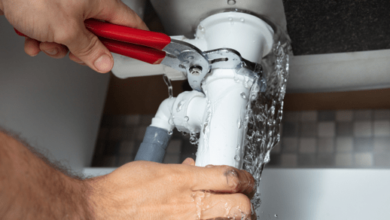The Future of Living: Understanding Smart Homes

In recent years, smart homes have revolutionized the way we interact with our living spaces, combining advanced technology with everyday life. By integrating various smart devices and systems, homeowners can enjoy enhanced convenience, security, and energy efficiency. This article explores what smart homes are, their benefits, key components, and how to create one.
What Are Smart Homes?
Smart homes refer to residences equipped with devices that automate tasks traditionally performed by humans. These devices are interconnected through the Internet of Things (IoT), allowing homeowners to control them remotely via smartphones, tablets, or voice-activated assistants. Common smart home devices include smart lighting, thermostats, security cameras, door locks, and appliances that communicate with each other, creating a seamless and efficient living experience.
Benefits of Smart Homes
- Convenience: One of the most significant advantages of smart homes is the convenience they offer. With the ability to control your home’s systems from anywhere, you can manage lighting, temperature, security, and entertainment with ease. For instance, you can turn off lights or adjust the thermostat from your smartphone while you’re at work or on vacation, ensuring your home is always comfortable and secure.
- Energy Efficiency: Smart homes are designed to optimize energy usage, leading to substantial savings on utility bills. Smart thermostats learn your habits and adjust heating and cooling accordingly, while smart lighting systems can turn off when you leave a room. These energy-efficient solutions not only save you money but also contribute to a greener planet by reducing your carbon footprint.
- Enhanced Security: Smart homes provide an advanced level of security through the integration of smart locks, cameras, and alarm systems. Homeowners can monitor their property in real-time, receive instant alerts about suspicious activities, and control access remotely. This increased level of security offers peace of mind, especially when you’re away from home.
- Improved Comfort: Smart home devices allow you to customize your living environment to suit your preferences. You can set up routines that adjust lighting, temperature, and even music based on the time of day or your activities. This level of personalization creates a more comfortable and enjoyable living space.
- Increased Property Value: Homes equipped with smart technology are often more attractive to potential buyers. As the demand for smart home features continues to rise, investing in smart home devices can increase your property’s value and appeal.
Key Components of Smart Homes
Creating a smart home involves several essential components that work together to provide a seamless experience:
- Smart Hub: A smart hub is the central control point for your smart devices. It connects various devices and allows them to communicate with each other. Popular smart hubs include Samsung SmartThings, Amazon Echo, and Google Nest Hub.
- Smart Lighting: Smart bulbs and lighting systems can be controlled remotely, allowing you to adjust brightness and colors or set schedules for when lights turn on and off. This not only enhances convenience but can also improve security by giving the appearance that someone is home.
- Smart Thermostats: These devices learn your heating and cooling preferences, allowing for more efficient temperature control. They can be programmed or adjusted remotely to save energy when you’re away.
- Smart Security Systems: A comprehensive security system includes smart cameras, doorbell cameras, motion sensors, and smart locks. These devices work together to monitor your home and alert you to any unusual activities.
- Smart Appliances: From refrigerators that track groceries to washing machines that you can start remotely, smart appliances add convenience and efficiency to your daily routines.
How to Create a Smart Home
Setting up a smart home starts with assessing your needs and determining which devices will best meet them. Here are some steps to guide you:
- Identify Your Goals: Decide what you want to achieve with your smart home. Whether it’s enhancing security, improving energy efficiency, or increasing convenience, having clear goals will guide your decisions.
- Choose a Smart Hub: Select a smart hub that fits your needs and is compatible with the devices you plan to use.
- Start with Essential Devices: Begin by investing in key devices such as smart lights, a thermostat, and security cameras. Gradually expand your smart home setup as you become more comfortable with the technology.
- Install and Configure: Follow the manufacturer’s instructions to install and configure your devices. Most smart devices come with user-friendly apps that make setup straightforward.
- Create Automations: Once your devices are connected, explore automation options to enhance your smart home experience. Set schedules and routines that suit your lifestyle, making everyday tasks easier.
Conclusion
Smart homes are transforming the way we live, offering unmatched convenience, energy efficiency, and security. By understanding the benefits and key components of smart homes, you can create a living space that not only meets your needs but also enhances your overall quality of life. As technology continues to advance, the possibilities for smart homes will only expand, making now the perfect time to embrace this innovative lifestyle.




